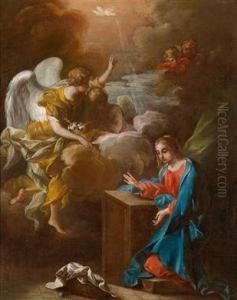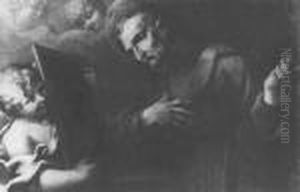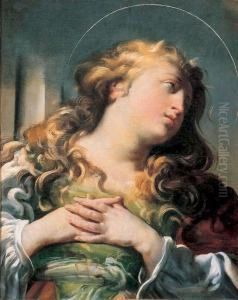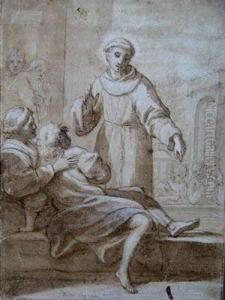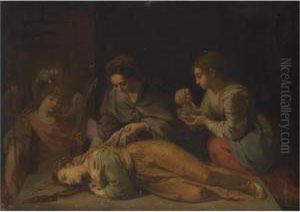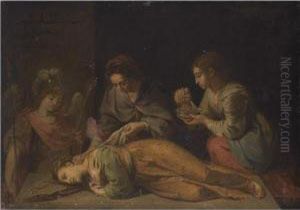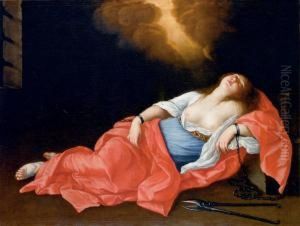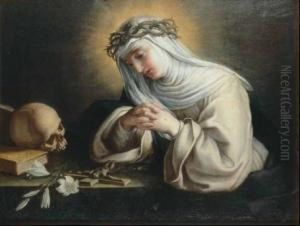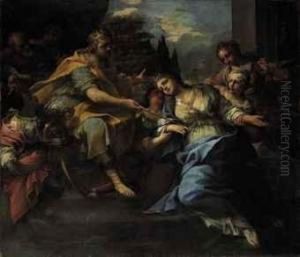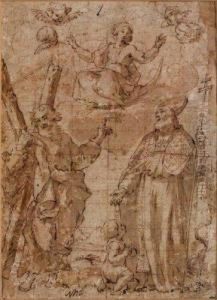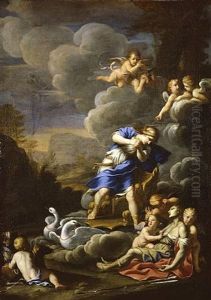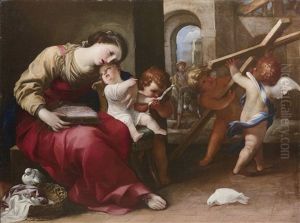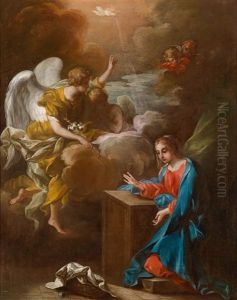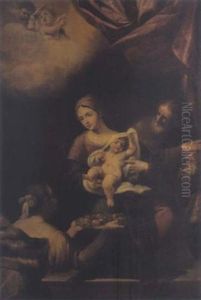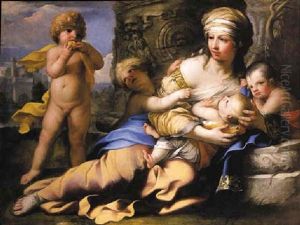Raffaello Vanni Paintings
Raffaello Vanni was an Italian painter of the Baroque period, active mainly in Siena. Born in 1587 in Siena, he was part of a prolific family of artists that significantly contributed to the art scene of their time. His father, Francesco Vanni, was also a well-known painter, and it is under his guidance that Raffaello began his artistic training. This early exposure to art within his family circle provided Raffaello with a solid foundation, allowing him to develop a distinctive style that blended the influence of his father with the broader currents of Baroque art sweeping through Italy at the time.
Vanni's work is characterized by its dynamic compositions, vibrant use of colour, and the emotional intensity of its figures. These qualities made him a sought-after artist for religious commissions, particularly for churches in Siena and its surrounding areas. One of his most notable works is the altarpiece for the Siena Cathedral, which showcases his ability to fuse the spiritual with the dramatic, a hallmark of Baroque art.
Throughout his career, Vanni also showed a keen interest in the human form, influenced by the study of classical antiquity and the works of Renaissance masters. This is evident in his drawings and studies, which reveal a meticulous approach to anatomy and movement. Despite the prevalence of religious themes in his oeuvre, Vanni's exploration of human emotion and physicality imbued his figures with a sense of realism and presence that was ahead of his time.
Vanni's contribution to the art of the Baroque period goes beyond his paintings. He was also involved in the training of future artists, passing on the techniques and stylistic approaches he had developed. Through his teaching, he played a part in the continuation of the artistic traditions of Siena, influencing the next generation of painters.
Raffaello Vanni passed away in 1673, leaving behind a legacy that is still appreciated in the study of Baroque art. His works continue to be admired for their emotional depth and technical mastery, qualities that make him a notable figure in the history of Italian art.
